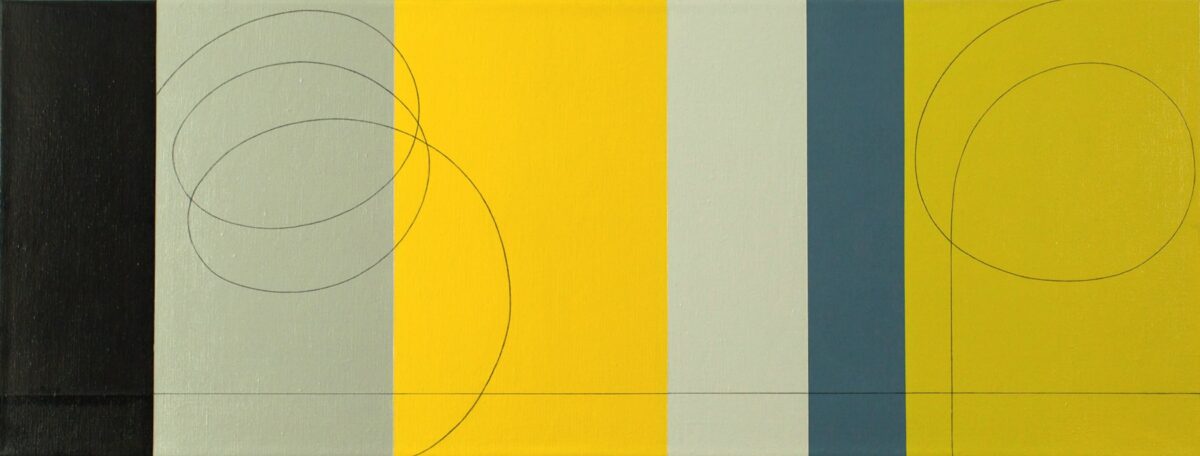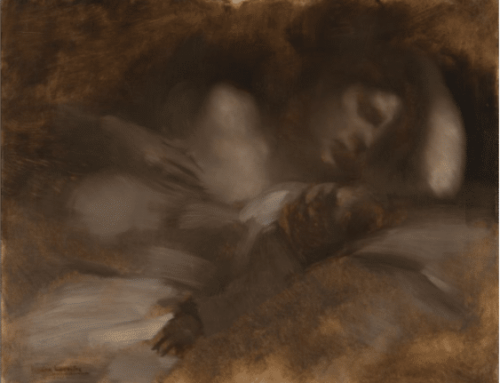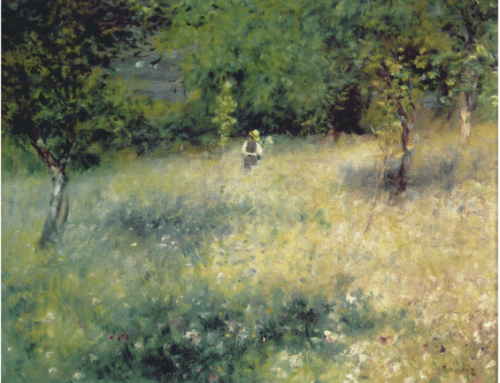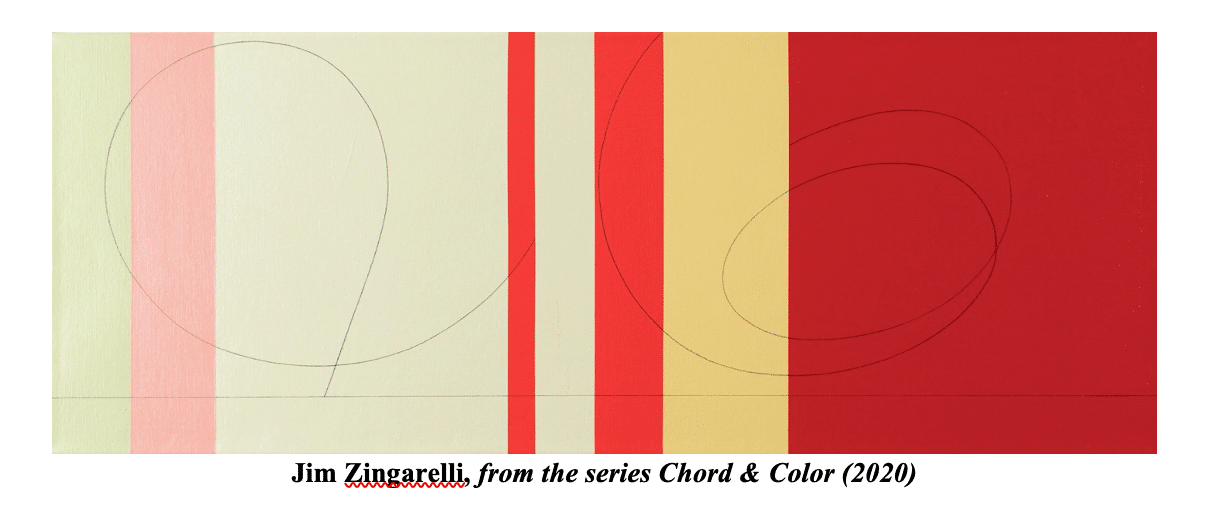
Jim Zingarelli’s paintings make music visible to the eye.
Zingarelli paints what appear to be purely non-representational, geometric abstractions but aren’t. These works are representational; yet what Zingarelli’s paintings represent isn’t something you can “see.” Rather, it’s an experience – that of listening to music. Zingarelli has two different series on this theme titled 4/4 and Chords & Color.
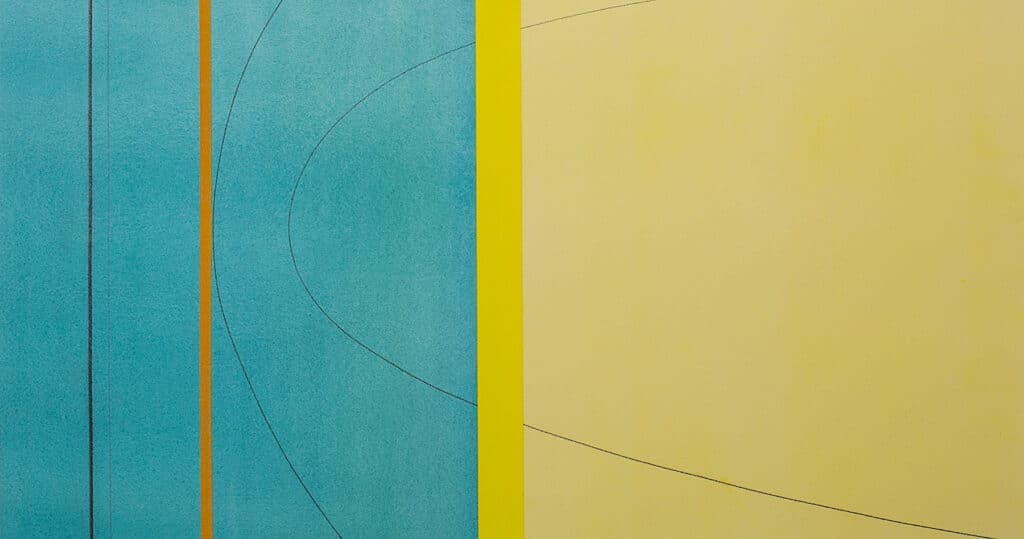
Jim ZIngarelli, 4/4 #38
In 4/4 #38, the artist refers to the 4/4 time signature of music. The vertical lines are “timed” in regular intervals, the canvas evenly divided (like the four beats per measure of the 4/4 time signature), while the thinly drawn lines curving through and against the vertical “beats” suggest the pulse of melody and the swell of sound.
Using the syncopated beat found in jazz, Zingarelli’s line dances above colored blocks that can represent chord harmonies – a visual riff on the liveliness of saxophones and violins.
These paintings might be kin to works like the “Flight” series of sculptures by Constantin Bancusi: elegant graphic metaphors for motion (music is motion through time rather than space). Zingarelli’s paintings are poetic maps of the musical experience.
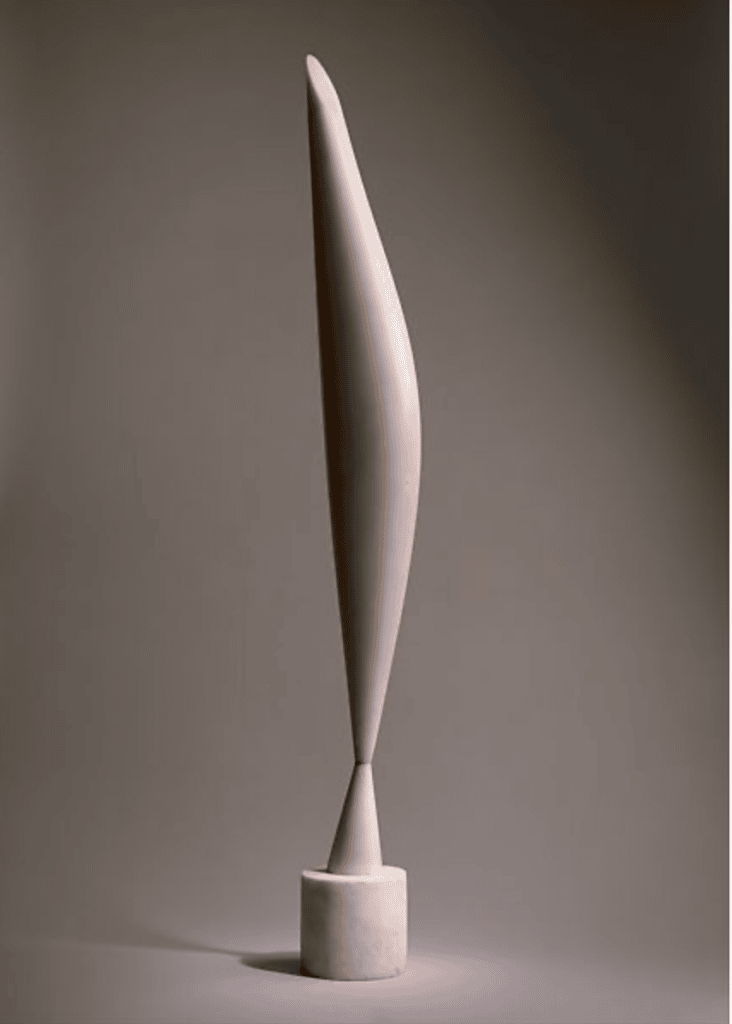
Brancusi, Bird in Flight, 1923
Abstraction is the perfect and probably the ONLY choice for this subject, which itself is abstract (in the sense of abstract concepts like love, or beauty). Zingarelli’s subject in these paintings is the beauty of music and the dynamics of chords, tones, melodies and rhythms.
And yet this work appeals immediately to the senses through its own visual harmonies and rhythms (intervals between repeated shapes) – reminding us that these terms, so often used to describe visual art, were in fact borrowed from the realm of music to begin with.
Such paintings ask to be approached on their own terms; they require an unfamiliar way of looking art before you can “hear/see” them.
‘This One Jumped Out at Me’
Why do some paintings first grab you by the lapels and then afterwards charm you into going home with them?
It’s a combination of value contrast, composition, brushwork, and just plain feeling, according to Karen Hagan, owner of Hagan Fine Art Gallery, who judged May’s PleinAir Salon monthly art competition. Here is her take on Steven Walker’s second-place winning entry, There’s a Story:

Steven Walker, There’s a Story, oil, 18×18 inches
“This one jumped out at me and initially I gave it an award within its category,” Karen said. “But when I looked back through the entries, this one was such a stunning work and had such engaging composition and feeling that I had to move its award up. I liked the placement of the sunset and again the brushwork had such variety in hard edges and soft edges. It’s like a good song. So much to see, and unforgettable.”

